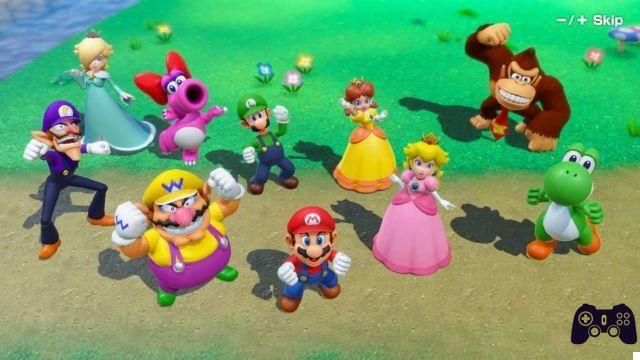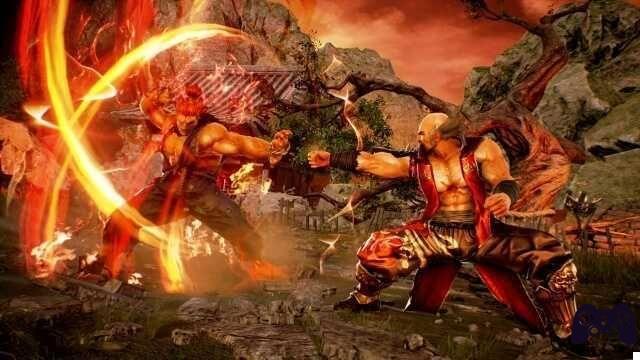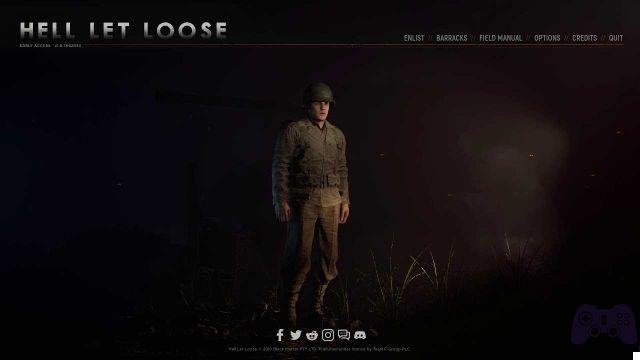Welcome back to the fifth installment of our in-depth guide to Super Smash Bros. Ultimate's stellar cast of playable characters
In this ours guide, we will focus on the many playable characters of Super Smash Bros. Ultimate, starting with Mario up to the latest additions of the second Fighters Pass. In each episode we will describe about five or six fighters, however, dividing them according to the chapter of Smash in which they made their debut. With this appointment ends the description of the characters seen for the first time in Super Smash Bros. Melee, and this time the number drops to four: Ganondorf, Mewtwo, Roy e Mr. Game & Watch. In the appendix, we will deal with mid-air combat. Let's get it inside!
Quick Preamble
Before moving on to the characters, let's clarify the fulcrum of the guide: in Super Smash Bros. Ultimate the task of each player is to throw opponents off the screen, fighting in arenas that mix the genre of fighting with elements of platformer (X and Y allow you to jump). The A and B keys, used in combination with the various directions, give life to the most disparate moves, as well as the back keys to manage shields, dodges and holds. The game also implements tools that irremediably alter the fate of each encounter, but in this guide we will basically focus only and only on the characters themselves. Increasing the opponent's damage will make him lighter and, therefore, vulnerable.
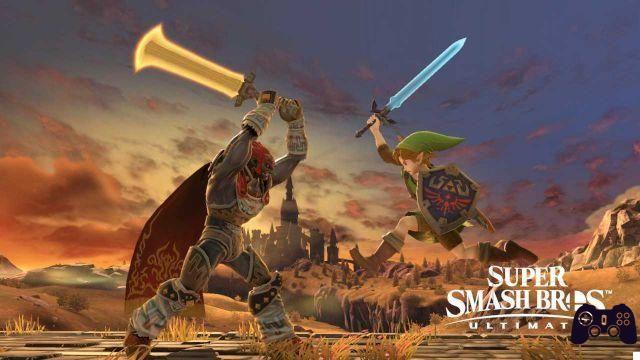
Ganondorf - Super Smash Bros. Ultimate Character Guide
While Bowser remains an almost good-natured antagonist, Ganondorf proudly takes on the role of prince of darkness. In the sprawling timeline of the Zelda saga, darkness may have corrupted him to the point of turning him into the pig demon Ganon. In general, the Triforce - the sacred symbol made up of three triangles - corresponds to three different values. Link symbolizes courage, Zelda the wisdom and Ganondorf / Ganon the power.
- Franchise of origin: The Legend of Zelda
- Origins: Unlike what is seen in Brawl and in the fourth Smash, the Ganondorf of Melee and Ultimate is the one seen in The Legend of Zelda: Ocarina of Time. The first humanoid representation of the character (born as Ganon in the first Zelda of 1986) sees him as the only male born in the tribe of thieves of the desert, the people of the Gerudo. Tradition dictates that the one man, born once every hundred years, becomes the leader of these pirates. The curse that killed the Deku Tree (see Child Link) is his doing.
- Gameplay: While the Smash attacks (right analog lever) gave him the deadly broadsword seen in previous installments of the series only in his victory poses, Ganondorf's special attacks consist of one version devastating of Captain Falcon's move sample. Fist Sorcerer (B), in particular, is based on the same principle as the Falcon Punch, with the addition of a supercorazza: In other words, even making the character flinch is difficult while he is unleashing this attack. Bite of Fire (↔ + B), unlike C. Falcon's Raptor Dash, grabs the opponent and throws him to the ground: a move as devastating as it is. potentially suicidal when used in the air. Dark dive (↑+B) e Soccer magician (↓ + B) are stronger variants of the corresponding Falcon moves.
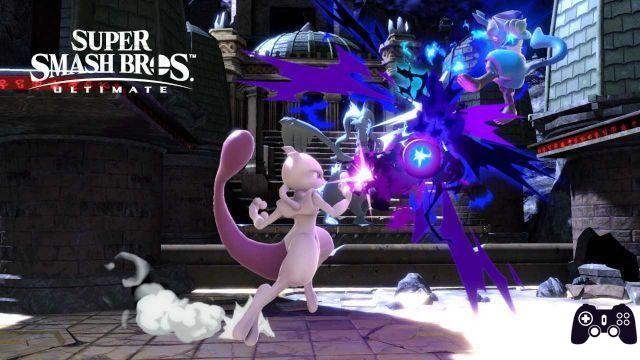
Mewtwo - Super Smash Bros. Ultimate Character Guide
Pokémon number 150, Mewtwo, is the closest to representing the antagonists of your own series of origin among the characters that we will see in this guide of Super Smash Bros. Ultimate. Graceful in the air but never necessarily "light", Mewtwo brings the devastating power of its psychic attacks to the Nintendo crossover.
- Franchise of origin: Pokémon
- Origins: Created in the laboratory by the joint effort between scientist Mr. Fuji and Team Rocket's organized crime, Mewtwo was born with the vital purpose of replicating the malleable genetic makeup of Mew (numbered 151 in the Pokédex). The Smash version of Mewtwo is based specifically on the story told in the first feature film born of the animated series, and in the Japanese version of the game it features dialogue that echoes his search for himself in the film. Outside of the games, Mewtwo's design derives from the version of Giygas seen in the first MOTHER.
- Gameplay: With Ball shadow (B), Mewtwo loads a bullet and can damage on contact opponents while doing so. When thrown into the air, Shadow Ball boasts considerable recoil. Confusion (↔ + B) instead allows you to reflect bullets in a way not unlike Mario's Cape, as well as to overturn opponents if used directly on them. Teleport (↑ + B) is a directional disappearance along the lines of that of Sheik, but does not deal any damage. Infine, Inhibitor (↓ + B) stuns opponents, but to benefit from it it is necessary that they are directed towards the user.
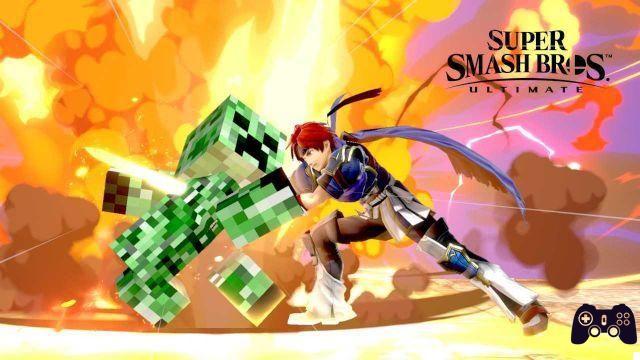
Roy - Super Smash Bros. Ultimate Character Guide
In a bizarre reversal of the process, Roy boasts the distinction of making his Super Smash Bros. Melee debut before his game even saw the light of day. While in Japan, where Fire Emblem: The Binding Blade remained exclusive, this move was little more than advertising, in the West the character is best known and loved for what he represents in Smash.
- Franchise of origin: Fire Emblem
- Origins: The Game Boy Advance Fire Emblem that actually came out in the West, known to us simply as the Fire Emblem (full title "… the Blazing Blade"), tells the story of Eliwood, Roy's father. In reality, however, this is a prequel set twenty years earlier, as Roy made his non-Smash debut without any context. Either way, Roy replaced his ailing father in war at the age of lonely fifteen years, leading the army of the kingdom of Pherae to victory against a corrupted divine dragon.
- Gameplay: La Sword of Seals differs from Marth's Falchion in its area of effectiveness: while the latter excels on the tip, Roy's sword works better near the hilt. Starting from It belongs to Vampa (B), the move is Roy's flagship: when loaded to the max, theesplosione that results do damage to the user, but any unfortunate target has a high chance of finishing KO to the 0% of damage. Double cut (↔ + B) is based on the same principle as Marth's Dancing Blades, and the same goes for the recovery move Cometa (↑ + B) and the Counter move (↓ + B). Roy's special attacks boast a fiery effect additional.
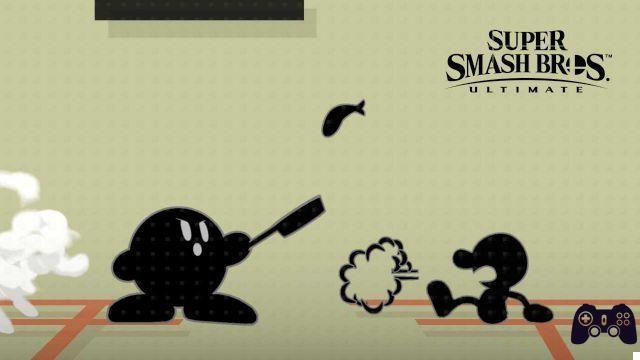
Mr. Game & Watch - Super Smash Bros. Ultimate Character Guide
The two-dimensional terror, Mr. Game & Watch, is an incomprehensible and inexplicable creature. In reality, this character amalgamates the entire family of portable consoles in his moveset for good or bad Game & Watch (1980) by Nintendo, making this character the most "senior" on the roster.
- Franchise of origin: Game & Watch family of handheld consoles
- Origins: Game & Watch was born when the volcanic genius of the Big N, the late Gunpei Yokoi, noticed a commuter fiddling with a calculator on the subway. The Game & Watch technology, that is the one used in the same displays of the digital watches, in the videogame field it is nowadays associated with low-grade portable electronic games, but at the time it was actually a revolutionary concept. The console family - with one platform game - pioneered dual screens, d-pads, wired controllers, and other concepts we take for granted today. Nintendo has revived the idea for the XNUMXth anniversary of Super Mario Bros. with a namesake, unreleased (and subject to mod) Game & Watch.
- Gameplay: A light and deadly character. Cook (B, above) generates a weak projectile with an arc trajectory. Punishment (↔ + B) hits the opponent with a hammer, while the display above Mr. Game & Watch shows a random number from 1 to 9. The power and the possible side effect are directly proportional to the figure: a 9 can be an assured KO. Fire (↑ + B) pushes the player up with two stretcher bearers, while the character can glide once in midair. Bucket (↓ + B) absorbs ranged attacks, then generates a powerful projectile when filled.
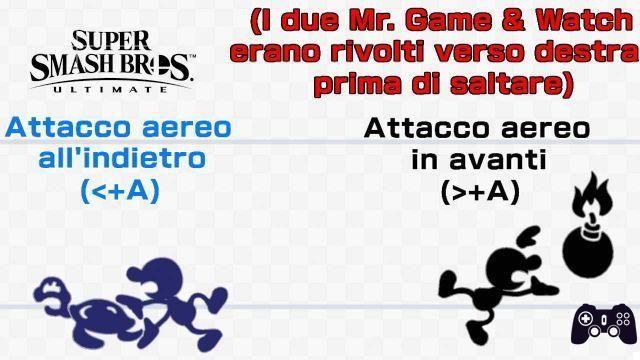
Concluding details, fifth episode: air strikes and mid-air movement
We close the discussion on the characters for today and move on to the general guide of Super Smash Bros. Ultimate. While on the ground the characters can turn freely, once you've taken a leap you can only move left and right. In other words, therefore, the air strikes they are divided into forward air strikes (> + A, where “>” indicates “forward”, in the air) and backward air strikes (<+ A in the air). Above we used Mr. Game & Watch as an example: the backward air strike is a physical attack, while the forward one drops a bullet (in this case a bomb) downward. With the necessary experience in the game, it is possible to choose the type of attack to launch before even taking the leap.
Take for example Mario, who we talked about at the beginning of the guide. His forward air attack (> + A in the air) has a named effect Smash Meteora ("Spike" in competitive jargon), or the possibility of throw a character down. Mario's backward airstrike, on the other hand, consists of a simple kick: an effective move, but less likely to abruptly end a fight. The aerial movement, with some exceptions, it is not excessively subject to inertia, but this is not an aspect to be taken lightly. In general, we advise you to attack in the air only occasionally before building strategies on the aerial game.
The appointment is with the sixth episode of the guide, where we will move on to the first rookies of Super Smash Bros. Brawl seen in the first trailer of E3 2006. And that's all for today: how are you feeling so far? (You can find the summary here.) Please let us know by leaving us a comment below, and don't forget to stay on Holygamerz to not miss any news from the videogame world and beyond.




